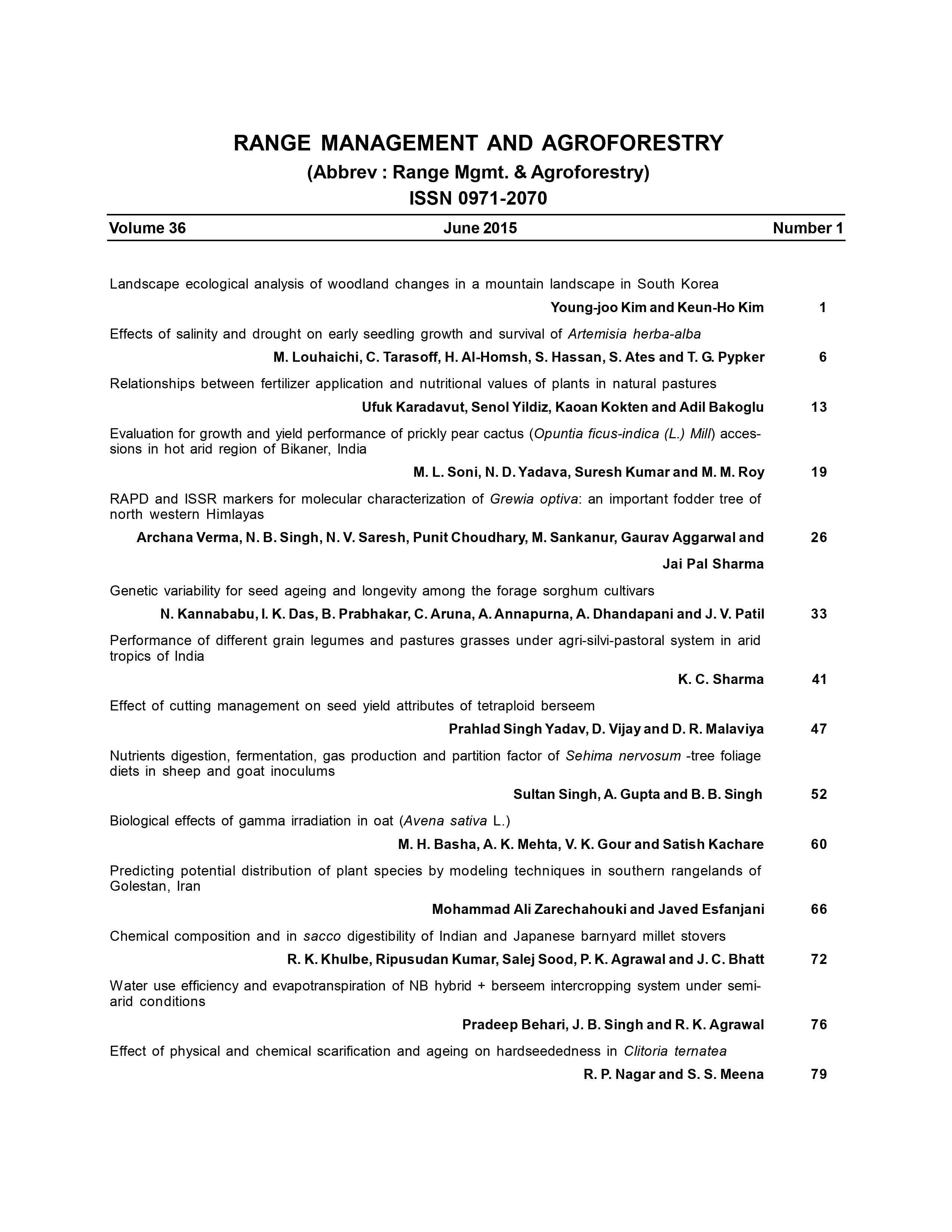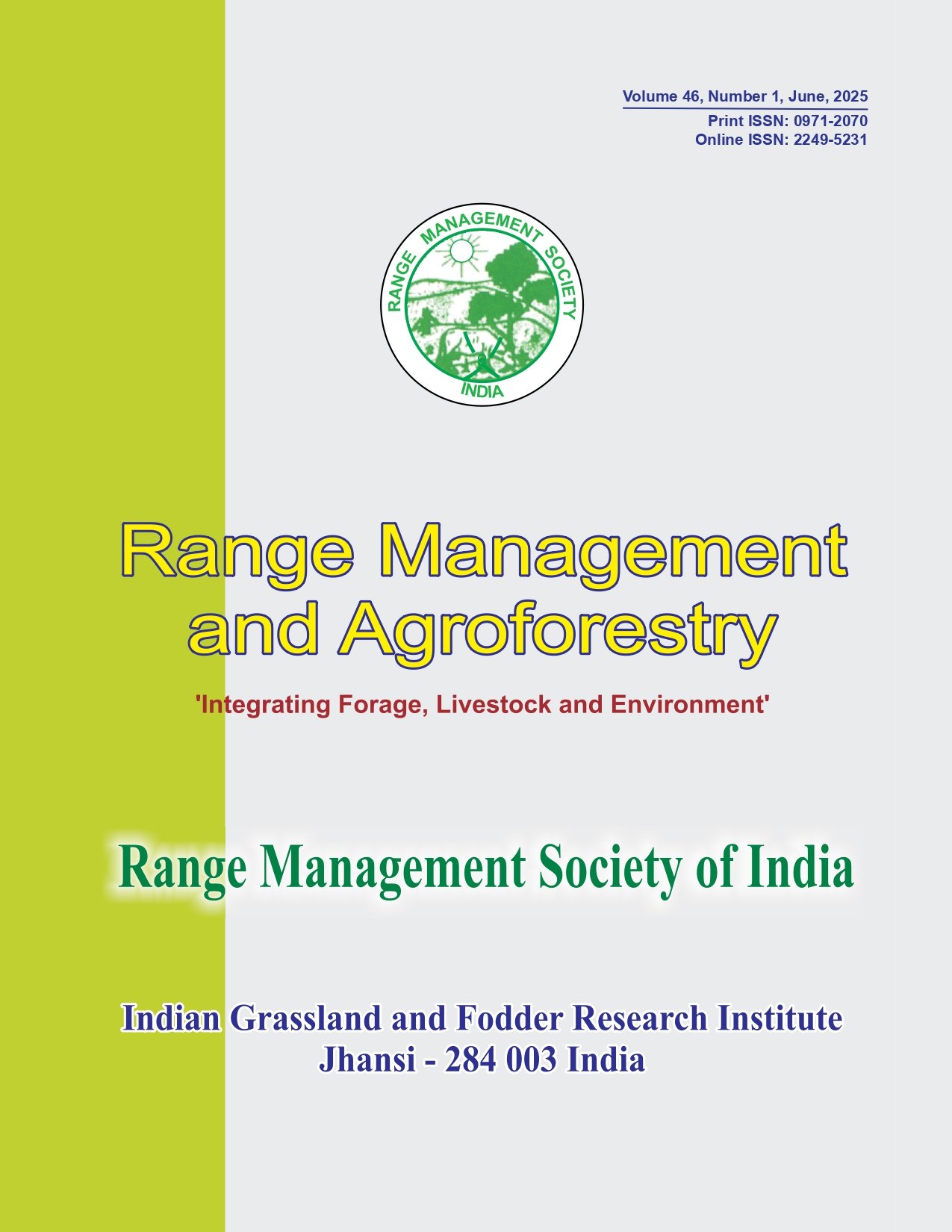Performance of different grain legumes and pasture grasses under agri-silvi-pastoral system in arid tropics of India
Keywords:
Agri-silvi-pastoral system, Arid tropics, Fodder yield, Grain legumes, Multi-purpose tree species, Pasture grassesAbstract
A field experiment was conducted at Bikaner to find out an efficient agri-silviculture or silvi-pastoral model for cultivable wastelands of arid tropics of India. Three multipurpose tree species viz., khejri (Prosopis cineraria), ardu (Ailanthus excelsa) and rohida (Tecomella undulata) suitable for arid tropics were selected and planted, and evaluated in association of annual grain legumes/ pasture grass species viz., cluster bean (Cyamopsis tetragonoloba), moth bean (Vigna aconitifolia), sewan grass (Lasiurus sindicus) and anjan grass (Cenchrus ciliaris) in split plot design with three replications. Results indicated that tree species had no adverse effect on growth and grain/fodder yields of grain crops and pasture grasses. Similarly, annual crops/grasses did not exerted any significant effect on the growth attributes of all tree species. Among grain crops and grasses, cluster bean recorded higher grain 818 and 915 kg/ha, and straw 1970 and 2470 kg/ha yields during 2009 and 2010, respectively over moth bean. Whereas, sewan grass out-yielded anjan grass with green fodder yield of 12.07 and 16.74 t/ha, and dry matter yield 4.68 and 6.02 t/ha during 2009 and 2010, respectively. Cluster bean equivalent yields (CEY) recorded with cluster bean (1.21 and 1.41 t/ha) and moth bean (1.15 and 1.41 t/ha) were statistically at par but significantly higher over both grass species. Slightly higher values of net returns Rs. 8450 and Rs. 14949 and B: C ratio 1.56 and 2.08 were observed with khejri plantation in both the years as compared to other tree species, while among crops cluster bean gave maximum values of net returns Rs. 15066 and Rs. 18620, and B: C ratio 1.99 and 2.12. All the treatment variables substantially improved the soil fertility status viz., OC (%), available N, P and K of soil in comparison to initial soil fertility status. Thus, study suggested that growing of cluster bean or moth bean with any multi-purpose tree species viz., khejri, ardu and rohida plantation holds promise to provide higher and economical grain productivity with improved fertility status of soil under agrisilviculture system in arid tropics of Rajasthan.




